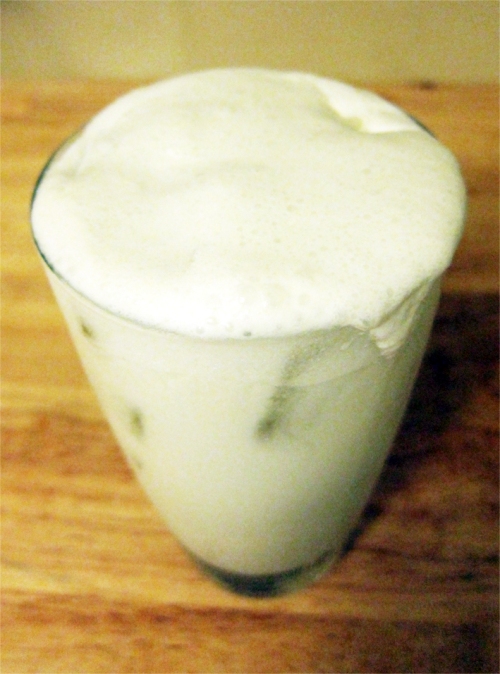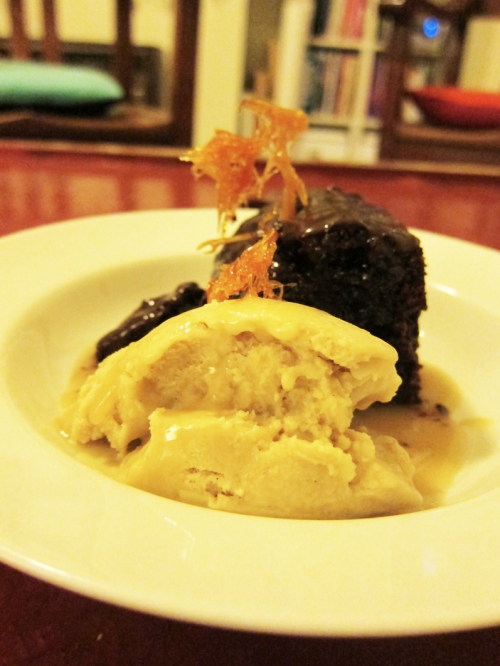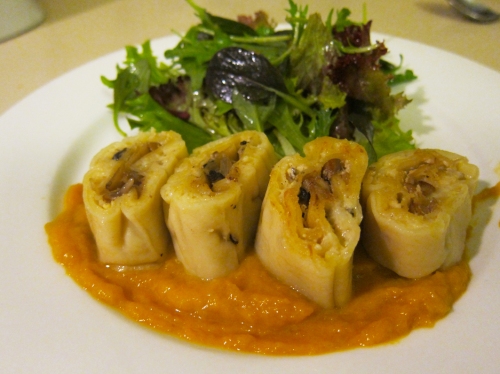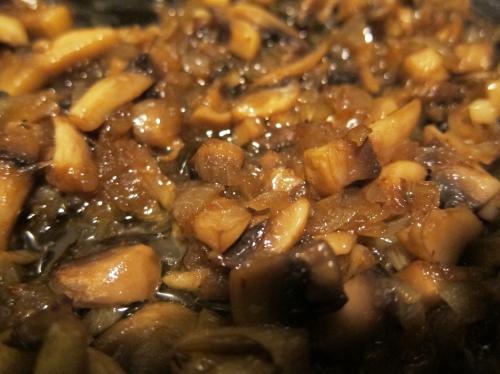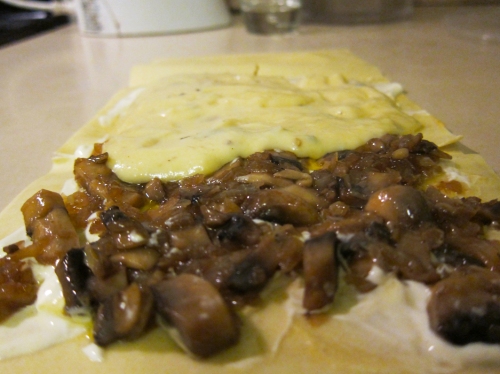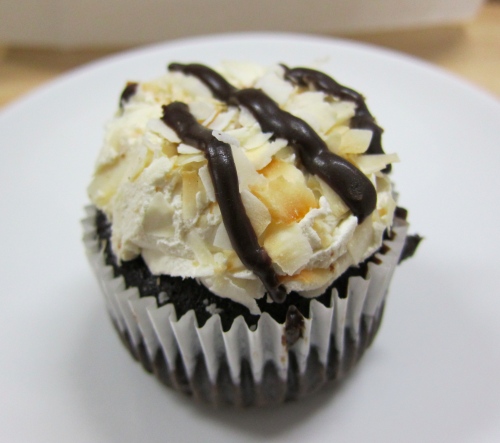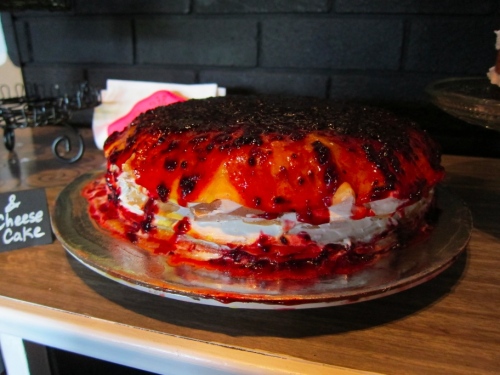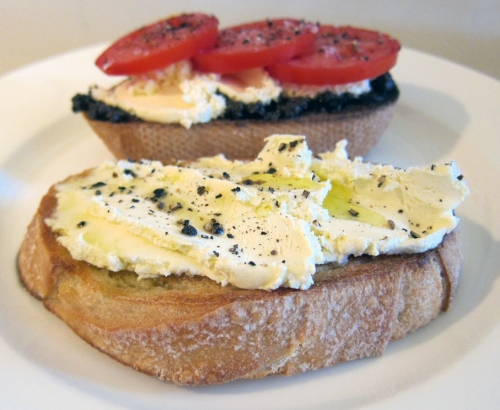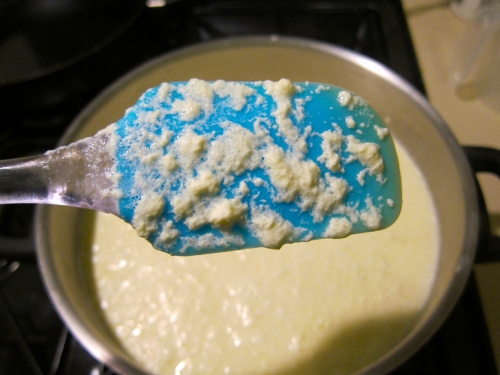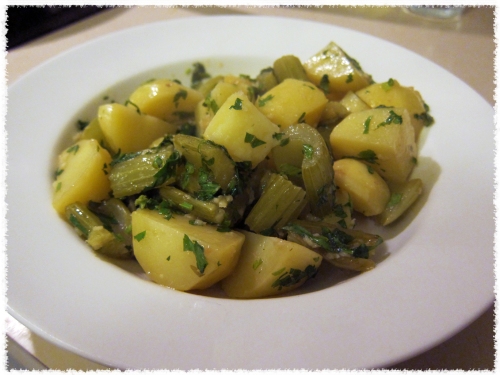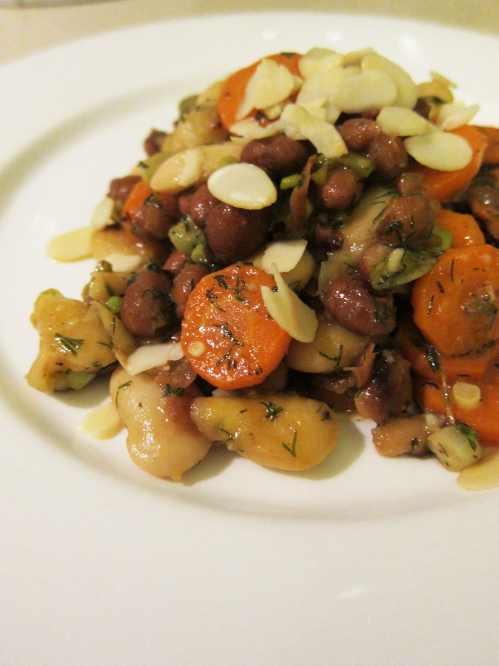I am not a fan of summer. Forty degree days, sunburn, public transport chaos, and sweating without even moving are just not my idea of fun. I survive by staying indoors, closing all the blinds, sitting in front of the fan, and obsessively checking the Melbourne real time temperature update in hopes of a cool change. Also drinking iced drinks.
Cold-brewed ice coffee
I can’t remember where I first encountered the idea – it was no doubt and excellent blog that I’m neglecting to credit. Wherever it came from, it solved my coffee addict/heat despising dilema.
The idea with cold brewing (apart from not having to cool the brew down) is that you get all the flavour without the bitterness. I have to say, it really works. And it’s really simple. Take a largish jug or other easy-to-pour from container, add a tablespoon of coffee per cup of water, and allow to steep for 12-24 hours. Strain through a fine sieve or a colander lined with cheesecloth into another jug. Serve sweetened or milked to your liking. I like it with a teaspoon of dark agave, some Bonsoy, and lots of ice.
The same method can be used for tea as well, although I’d advise brewing for a shorter time to avoid it becoming too tannic. I’m particularly fond of cold-brewed chai, again with agave and soy milk.
Lychee Slushie
Inspired by the drinks at countless dumpling houses, this couldn’t be simpler, and works well with just about any canned fruit. Mangoes are my other favourite. You can also turn these into an adult beverage by adding the white spirit of your choice.
I use three trays of ice cubes to one large (560g) tin of lychees, which makes a little bit more than two of my glasses full. Put the ice and lychees in a blender and blitz until they reach whatever consistency you like. Pour into tall glasses and finish with a squeeze of lime. Drink and be cool.
Pantry Pina Coladas
These aren’t ‘proper’ pina coladas by any means, but they are delicious and they get the job done and I usually have all the ingredients in my pantry, avoiding the necessity to leave the house and walk around in the heat. Much better to stay in and drink.
Fill your blender half full of ice. Add a tin of coconut milk, a large tin of pineapple pieces (in syrup or juice according to your sweetness preference) and a good bit of white rum (again, according to your preference). Blitz until the ice is crushed and the whole thing looks creamy and delicious. Pour into glasses, drink, and be glad summer at least gives you an excuse to indulge.
Also be glad that, even though the fading light means your photos turn out badly, there should be a cool change coming soon.



